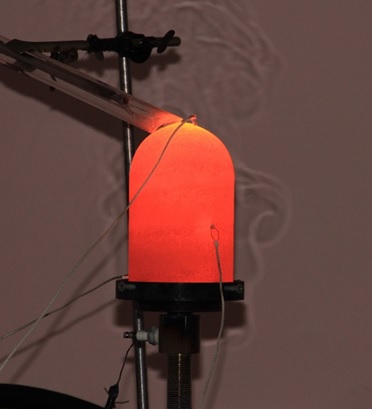Infrared gas burners
Principle investigators:
- Alexander Ivanovich Kirdyashkin, Ph.D., Lead Researcher ( kirdyashkin_a@mail.ru ).
- Anatoly Sergeevich Maznoy, Ph.D., Senior Researcher ( maznoy_a@mail.ru ).
Cylindrical burners made of Ni-Al alloy have been developed, which are simultaneously characterized by both maximum efficiency and low emissions. Efficiency and emissions can be controlled by selecting the correct pore structure - the size of microchannels and the size of Ni-Al structural elements.

Overall performance:
Material composition: Ni-Al, Co-Al intermetallides
Porosity: 40¸70%
Transport pore size: 10¸1000 microns
Geometric dimensions of products:
hollow sphere: diameter - up to 200 mm
plate thickness - up to 40 mm, length and width - up to 500 mm
Compressive strength: up to 30 MPa
Heat resistance: up to 1300-1400 K
Advantages of infrared gas burners
- Burners are characterized by the highest efficiency of infrared radiation generation among analogues. Up to 75% of the energy of the burnt gas is converted into an infrared flux.
- Stable operation in combustion modes that provide zero carbon monoxide emissions and nitrogen oxides emission according to the world s most stringent standards - less than 15 ppm.
- These burners can be used to develop new heating devices, in which the radiant heat transfer dominates. In particular, these are gas hot water boilers for detached house suburbs and small boiler plants with a capacity of up to 100 kW.
Applications:
- hot water boilers;
- burners for conveyor drying;
- burners for combined heat and electricity generation devices (e.g. thermoelectric or thermophotovoltaic modules);
- burners for asphalt repair.


